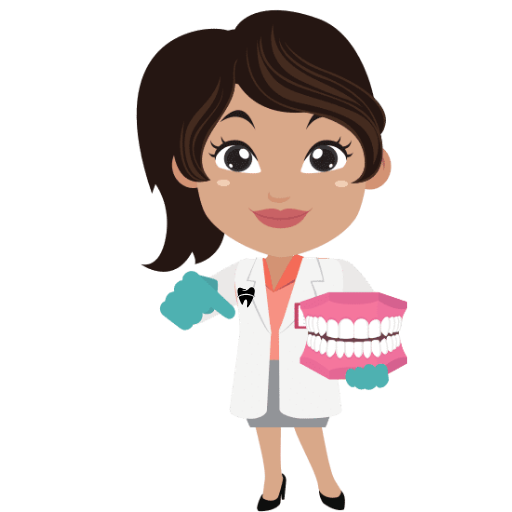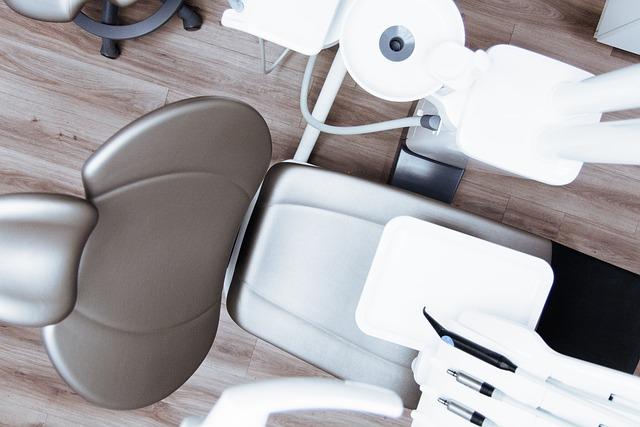Bruxism, the involuntary grinding of teeth, affects countless individuals worldwide. But fear not! In this article, we will explore the top approaches to finding relief from this troubling condition. Get ready to say goodbye to teeth grinding!
1. Understanding Bruxism: What is it and why does it require treatment?
Bruxism is a common dental condition characterized by teeth grinding or clenching, often unconsciously during sleep. It may seem harmless, but it can lead to serious dental issues if left untreated. Here’s why bruxism requires proper treatment:
1. Dental Damage: The constant grinding can wear down the enamel, leading to tooth sensitivity, fractures, and even tooth loss. Treatment aims to prevent further damage and restore dental health.
2. Jaw Discomfort: Bruxism can cause soreness and pain in the jaw joint, known as temporomandibular joint disorder (TMD). Treating bruxism can alleviate this discomfort and help improve jaw mobility.
3. Sleep Disruptions: Bruxism not only affects your dental health but can also disturb your sleep and even that of your bed partner. By seeking treatment, you can prevent further sleep disruptions and improve overall sleep quality.
4. Headaches and Facial Pain: Grinding can exert excessive pressure on the jaw muscles, leading to frequent headaches and facial pain. Addressing bruxism through treatment can provide relief from these uncomfortable symptoms.
5. Preventative Measure: Treating bruxism early can help prevent the development of more severe dental conditions down the line. Regular dental check-ups and professional advice can guide you towards the most suitable treatment options.
Remember, if you suspect you have bruxism or experience any of its associated symptoms, seeking professional dental advice is crucial. Together, we can manage and treat bruxism effectively, restoring your dental health and improving your overall quality of life.
2. The Importance of Identifying the Root Causes: Addressing underlying issues to alleviate bruxism
Identifying the root causes of bruxism is crucial for effectively addressing this condition and finding long-term relief. By understanding and targeting the underlying issues that contribute to bruxism, individuals can alleviate symptoms and prevent further damage to their teeth and jaw.
A comprehensive approach to addressing bruxism involves identifying both physical and psychological factors that may be at play. Here are some key reasons why identifying the root causes of bruxism is essential:
- Preventive measures: By identifying the underlying causes, individuals can take proactive steps to prevent bruxism. For example, if stress or anxiety is a contributing factor, stress management techniques like exercise, counseling, or meditation may be recommended.
- Treatment customization: Different individuals may have different root causes of bruxism. By identifying the specific cause, healthcare professionals can tailor treatment plans to address those factors. This personalized approach ensures the most effective and efficient management of the condition.
- Long-term relief: Addressing root causes not only provides immediate relief but also helps prevent the recurrence of bruxism in the future. By resolving underlying issues, individuals can experience long-term alleviation of symptoms rather than relying on temporary solutions.
Identifying the root causes of bruxism is the key to successful treatment and management. It empowers individuals by giving them the knowledge and understanding they need to take control of their condition and improve their overall quality of life.
3. Dentist’s Consultation: Expert diagnosis and personalized treatment plans for bruxism
Bruxism, often referred to as teeth grinding or clenching, is a common dental condition that affects both adults and children. If you suspect you have bruxism or have already received a diagnosis, it’s crucial to consult with a dentist who specializes in this condition. At our clinic, we offer expert diagnosis and personalized treatment plans for bruxism to help you find relief and protect your oral health.
Our team of experienced dentists understands that every case of bruxism is unique, and that’s why we take the time to conduct a thorough examination before recommending a treatment plan. During your consultation, our dentist will:
- Perform a comprehensive examination of your teeth, jaw, and facial muscles to assess the severity of your bruxism.
- Ask you about your symptoms, including any pain or discomfort you may be experiencing.
- Discuss your medical history and any medications you are currently taking, as these factors can contribute to teeth grinding.
Based on this evaluation, our dentist will create a personalized treatment plan tailored to your specific needs. Your treatment plan may include:
- Prescription of a custom-fitted mouthguard to wear at night, which can prevent teeth grinding and protect your teeth from further damage.
- Recommendations for stress management techniques, as stress is often a contributing factor to bruxism.
- Advice on lifestyle changes, such as avoiding caffeine and alcohol, as these substances can exacerbate teeth grinding.
By seeking a dentist’s consultation for bruxism, you can take the first step towards finding relief from the uncomfortable symptoms and protecting your oral health. Don’t hesitate to schedule an appointment with our experienced team today.
4. Splint Therapy: How bite guards can effectively reduce teeth grinding and jaw clenching
Splint therapy, also known as bite guards, offers an effective solution for reducing teeth grinding and jaw clenching. These customized oral appliances are designed to fit over your top or bottom teeth and help alleviate the symptoms associated with these common dental issues. Here are some key ways in which splint therapy can benefit you:
1. Protection for your teeth: Bite guards serve as a protective barrier between your upper and lower teeth, preventing them from grinding against each other. This not only reduces the risk of tooth damage such as fractures or chips, but also helps to preserve the enamel’s integrity.
2. Muscle relaxation: By wearing a bite guard during sleep or periods of stress, you allow your jaw muscles to relax. This helps in reducing tension and prevents the excessive strain that can contribute to teeth grinding and jaw clenching.
3. Pain relief: Splint therapy provides relief from the discomfort associated with teeth grinding and jaw clenching. By creating a cushioning effect, it helps to alleviate pressure on your jaw joints, reducing pain in your jaw, temples, and even headaches that are often caused by these conditions.
4. Improved sleep quality: Teeth grinding and jaw clenching can disrupt your sleep patterns and leave you feeling fatigued. Bite guards promote better sleep by reducing the noises and movements caused by grinding, ensuring you wake up feeling more rested and refreshed.
Remember, splint therapy is a customized treatment option that requires professional guidance. If you experience symptoms of teeth grinding or jaw clenching, it’s best to consult with a dentist who can assess your specific needs and provide a tailored solution to help you reduce these issues and improve your oral health.
5. Cognitive-Behavioral Therapy: Changing habits and managing stress to combat bruxism
Cognitive-Behavioral Therapy (CBT) is a proven approach to managing bruxism by targeting the underlying habits and stress that contribute to teeth grinding. By changing these habits and effectively managing stress, individuals can alleviate the symptoms and prevent long-term damage. Here are some key strategies that CBT offers in its comprehensive approach:
- Identify triggers: CBT helps individuals identify the triggers that lead to teeth grinding, such as anxiety or certain behaviors. Once those triggers are recognized, techniques can be implemented to interrupt the habit cycle.
- Stress management techniques: CBT equips individuals with an array of stress management techniques to cope with daily stressors. These techniques may include deep breathing exercises, progressive muscle relaxation, or mindfulness meditation. By effectively managing stress, individuals can reduce their susceptibility to bruxism.
- Cognitive restructuring: This aspect of CBT focuses on identifying and challenging negative thought patterns that contribute to bruxism. By replacing these thoughts with positive and realistic ones, individuals can change their mindset and improve their ability to cope with stress.
- Habit reversal training: CBT utilizes this technique to help individuals become aware of the involuntary grinding habit and provides techniques to replace it with a more desirable behavior. This can involve keeping the tongue between the teeth, self-monitoring, or engaging in activities that distract from grinding.
Cognitive-Behavioral Therapy is an evidence-based approach that addresses bruxism from both a psychological and behavioral standpoint. By changing habits and effectively managing stress, individuals can gain control over their symptoms and prevent further damage to their teeth and jaw. Seeking professional guidance from a therapist trained in CBT can provide the necessary support and guidance to successfully combat bruxism.
6. Medications for Bruxism: Exploring pharmacological options to alleviate symptoms
When it comes to dealing with the symptoms of bruxism, there are several pharmacological options available that can help alleviate the discomfort and damage caused by teeth grinding and clenching. Here, we will explore some of the medications that have been found to be effective in managing bruxism:
- Benzodiazepines: These medications are commonly used to treat anxiety and insomnia but have also shown promise in reducing bruxism symptoms. Benzodiazepines work by relaxing the muscles and promoting calmness, which can help prevent teeth grinding during sleep.
- Muscle relaxants: Certain muscle relaxant medications can be prescribed to relax the chewing muscles and prevent excessive grinding and clenching. These medications work by blocking nerve impulses that cause muscle contractions.
- Antidepressants: In some cases, tricyclic antidepressants or selective serotonin reuptake inhibitors (SSRIs) may be prescribed to manage bruxism symptoms. These medications can help regulate neurotransmitters in the brain and reduce muscle activity associated with teeth grinding.
It is important to note that medication should always be prescribed and monitored by a healthcare professional, as they will consider the individual’s specific needs and potential side effects. Additionally, medication should be used in conjunction with other treatment options, such as stress management techniques and mouth guards, for optimal results.
7. The Power of Physical Therapy: Exercises and techniques to relax jaw muscles and promote healing
When it comes to addressing jaw muscle tension and promoting healing, physical therapy can be incredibly beneficial. By targeting specific muscles and incorporating relaxation techniques, physical therapy plays a crucial role in alleviating pain and restoring proper function. Here are some exercises and techniques that can help you relax your jaw muscles and support the healing process:
- Jaw stretches: Gently open your mouth as wide as possible, then slowly close it. Repeat this movement several times to release tension in the jaw muscles. Another effective stretch is to place your tongue on the roof of your mouth and open your mouth slightly, feeling the gentle stretch along the sides of your jaw.
- Heat and cold therapy: Applying a warm compress or taking a warm shower can help relax the jaw muscles and alleviate pain. Alternatively, using a cold pack or ice wrapped in a thin cloth can reduce any inflammation or swelling in the area. Remember to always protect your skin from extreme temperatures to prevent burns or frostbite.
- Relaxation techniques: Practicing deep breathing exercises and engaging in activities that promote relaxation, such as meditation or yoga, can help reduce stress and tension in your jaw muscles. It’s important to allow yourself time to unwind and consciously release any jaw clenching or teeth grinding habits.
By incorporating these exercises and techniques into your routine, you can make significant progress in relaxing your jaw muscles and promoting healing. However, it’s crucial to consult with a physical therapist or healthcare professional to ensure you’re performing the exercises correctly and receiving personalized guidance based on your specific needs and condition.
8. Lifestyle Adjustments: Simple changes that can significantly improve bruxism-related symptoms
There are several lifestyle adjustments that can be made to alleviate the symptoms associated with bruxism. These simple changes can have a significant impact on your overall well-being:
- Stress management: Since stress is closely linked to bruxism, finding effective stress management techniques is crucial. Consider incorporating activities such as yoga, meditation, or deep breathing exercises into your daily routine.
- Limiting caffeine and alcohol intake: Both caffeine and alcohol can exacerbate the symptoms of bruxism. It’s advisable to reduce or eliminate the consumption of these substances, particularly in the evening, to minimize teeth grinding during sleep.
- Avoiding chewing on non-food items: Habitually chewing on things like pen caps or fingernails can put additional strain on your jaw muscles, increasing the likelihood of teeth grinding. Breaking this habit can help alleviate bruxism-related symptoms.
- Using relaxation techniques before sleep: Establishing a relaxing bedtime routine can help calm your mind and body before sleep, reducing the risk of teeth grinding during the night. Try incorporating activities such as taking a warm bath, reading a book, or listening to soothing music.
- Practicing good sleep hygiene: Creating a sleep-friendly environment can contribute to a more restful night’s sleep and potentially lessen bruxism symptoms. Ensure your bedroom is dark, quiet, and comfortable, and establish a regular sleep schedule.
By implementing these lifestyle adjustments, you can take proactive steps towards managing your bruxism and improving your overall quality of life.
9. Dental Procedures: Restorative methods for correcting dental damage caused by bruxism
Bruxism, also known as teeth grinding, can cause significant damage to the teeth over time. Fortunately, there are several restorative methods available to correct this dental damage caused by bruxism. These procedures aim to improve both the functionality and aesthetics of the teeth, providing relief to patients who suffer from this condition.
One commonly used method is dental bonding, which involves the application of a tooth-colored composite resin to repair cracked or chipped teeth. This material is carefully shaped and polished to match the natural appearance of the affected tooth. Dental bonding not only restores the damaged tooth but also improves its strength and durability.
Another effective procedure for bruxism-related dental damage is dental crowns. These are custom-made caps that cover the entire tooth, providing protection and reinforcement. Dental crowns are often recommended for severely damaged or weakened teeth, as they restore the tooth’s original shape, size, and function. They are made from various materials, such as porcelain, metal, or a combination of both, depending on the patient’s specific needs.
- Dental bonding: restoration of cracked or chipped teeth using tooth-colored composite resin.
- Dental crowns: custom-made caps that cover and protect damaged or weakened teeth.
These restorative dental procedures offer durable solutions to correct dental damage caused by bruxism. Whether it’s through dental bonding or dental crowns, patients can regain their confident smile and improve their overall oral health.
10. Ongoing Care and Maintenance: Long-term strategies to manage and prevent bruxism recurrence
Regular care and maintenance are essential for managing and preventing the recurrence of bruxism. By following these long-term strategies, you can effectively minimize the impact of bruxism on your dental health:
- Consistent dental check-ups: Regular visits to your dentist are crucial in monitoring your oral health and detecting any signs of bruxism recurrence. Your dentist will examine your teeth, gums, and jaw joints to ensure early intervention.
- Customized mouthguard: Wearing a custom-made mouthguard at night can provide a protective barrier between your upper and lower teeth, preventing grinding and clenching. It is essential to replace your mouthguard periodically to ensure its effectiveness.
- Stress management techniques: Since stress is often a contributing factor to bruxism, incorporating stress management techniques into your daily routine can be beneficial. Activities like exercise, meditation, deep breathing, and maintaining a healthy lifestyle can help alleviate stress and reduce the frequency of grinding.
- Avoiding triggers: Identifying and avoiding anything that triggers your bruxism can significantly prevent its recurrence. Factors such as caffeinated beverages, alcohol, chewing on pens or nails, and excessive gum chewing can worsen bruxism. Being mindful of these triggers can aid in maintaining long-term control over the condition.
- Good sleep hygiene: Establishing a bedtime routine and creating a calming sleep environment can contribute to better sleep quality, reducing the likelihood of bruxism. Ensure a comfortable sleeping environment, avoid electronics before bed, and stick to consistent sleep schedules to promote a restful night’s sleep.
By incorporating these long-term strategies into your routine, you can effectively manage bruxism and minimize its impact on your dental health. Remember, consistent care and maintenance are key to preventing bruxism recurrence. In conclusion, there are several effective approaches to treating bruxism. From mouthguards to stress management techniques, finding a solution is possible. Don’t let teeth grinding affect your quality of life—seek professional help and regain control over your oral health.







